#Eric Schlaepfer
Explore tagged Tumblr posts
Text
Open Circuits
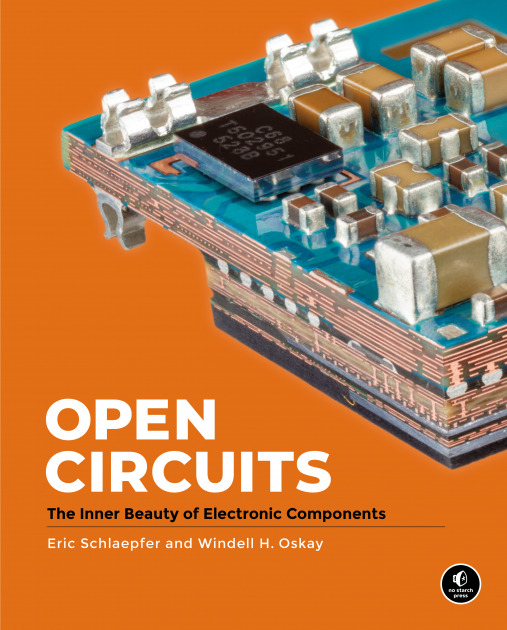
I'm kickstarting the audiobook for "The Internet Con: How To Seize the Means of Computation," a Big Tech disassembly manual to disenshittify the web and make a new, good internet that picks up where the old, good internet left off. It's a DRM-free book, which means Audible won't carry it, so this crowdfunder is essential. Back now to get the audio, Verso hardcover and ebook:
http://seizethemeansofcomputation.org

Every trip to Defcon – the massive annual hacker-con in Las Vegas – is a delight. Partly it's the familiar – seeing old friends, getting updates on hacks of years gone by. But mostly, it's the surprises, the things you never anticipated. Defcon never fails to surprise.
I got back from Vegas yesterday and I've just unpacking my suitcase, and with it, the tangible evidence of Defcon's cave of wonders. My gear bag has a new essential: Hak5's malicious cable detector, a little USB gizmo that lights up if it detects surreptitious malicious activity, even as it interdicts those nasty payloads:
https://shop.hak5.org/collections/omg-row2/products/malicious-cable-detector-by-o-mg
(In case you're wondering if it's really possible to craft a malicious USB cable that injects badware into your computer and is visually indistinguishable from a regular cable, the answer is a resounding yes, and of course, Hak5 sells those cables, with a variety of USB tips:)
https://shop.hak5.org/collections/omg-row2/products/omg-cable
But merch is only a sideshow. The real action is in the conference rooms, where hackers update you on the pursuit of their obsessions. These are such beautiful weirdos who pursue knowledge to ridiculous extremes, untangling gnarly hairballs just to follow a thread to its origin point.
For the second year in a row, I caught a presentation from Joseph Gabay about his work on warshopping: slicing up shopping cart wheels and haunting shopping mall parking lots during resurfacing to figure out how the anti-theft mechanism that stops your cart from leaving the parking lot works:
https://www.begaydocrime.com/
And of course, I got to give one of those presentations, "An Audacious Plan to Halt the Internet's Enshittification," to a packed house. What a thrill! It was livestreamed, and if you missed it, you'll be able to catch it on Defcon's Youtube page as soon as they upload it (they've got a lot of uploading to do!):
https://www.youtube.com/@DEFCONConference/videos
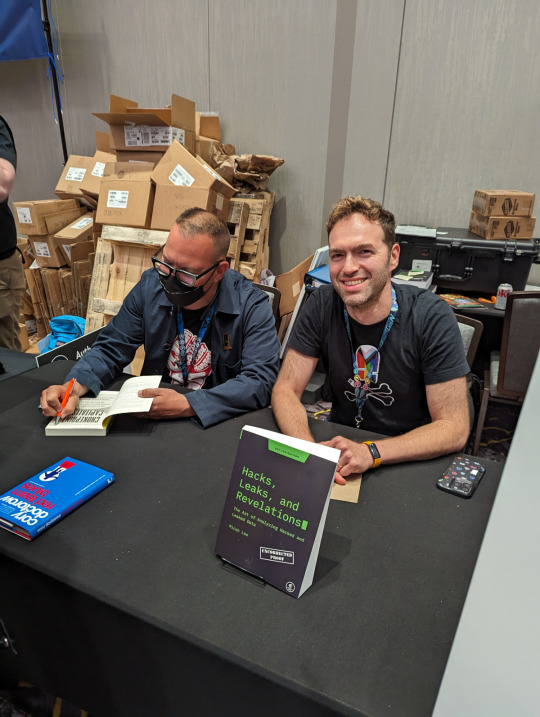
After my talk, I went back to the No Starch Press booth for a book signing – which was amazing, so many beautiful hackers, plus I got to share a signing table with Micah Lee. As I was leaving, Bill Pollock slipped me a giant hardcover art-book, and said, "You're gonna love this."

I did. The book is Open Circuits: The Inner Beauty of Electronic Components, by Windell Oskay and Eric Schlaepfer, and it is a drop-dead gorgeous collection of photos of electronic components, painstakingly cross-sectioned and polished:
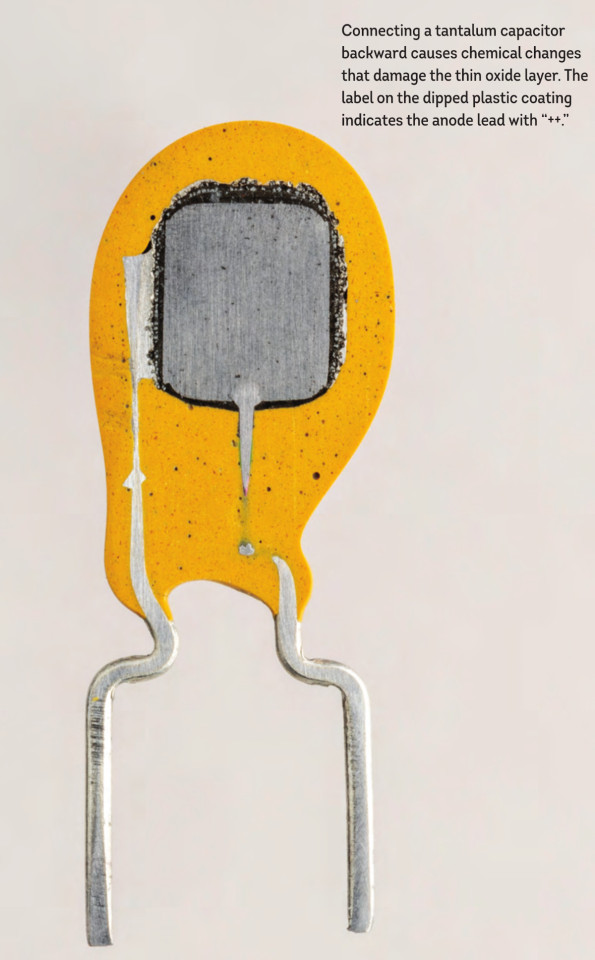
The photos illustrate layperson-friendly explanations of what each component does, how it is constructed, and why. Perhaps you've pondered a circuit board and wondered about the colorful, candy-shaped components soldered to it. It's natural to assume that these are indivisible, abstract functional units, a thing that is best understood as a reliable and deterministic brick that can be used to construct a specific kind of wall.
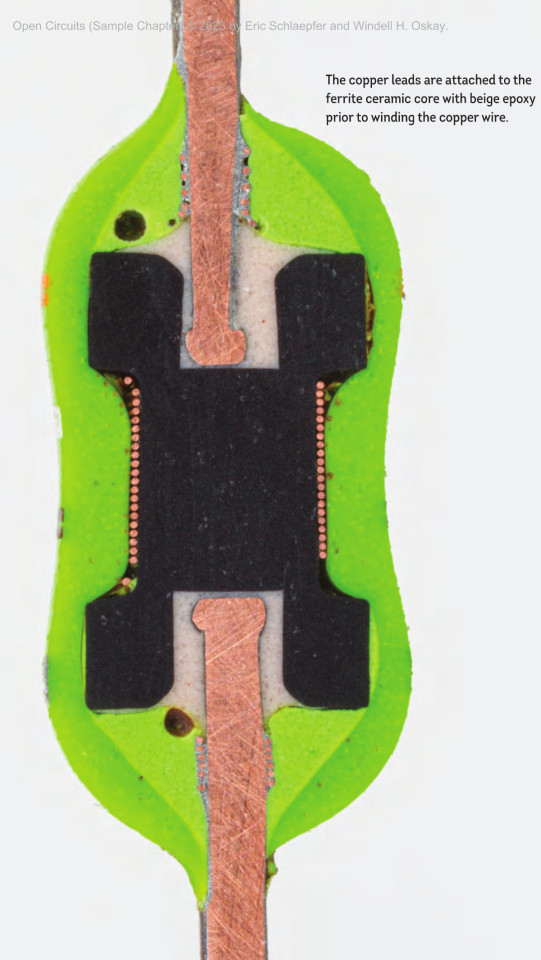
But peering inside these sealed packages reveals another world, a miniature land where things get simpler – and more complex. Inside these blobs of resin are snips of wire, plugs of wax, simple screws, fine sheets of metal in stacks, wafers of plain ceramic, springs and screws.
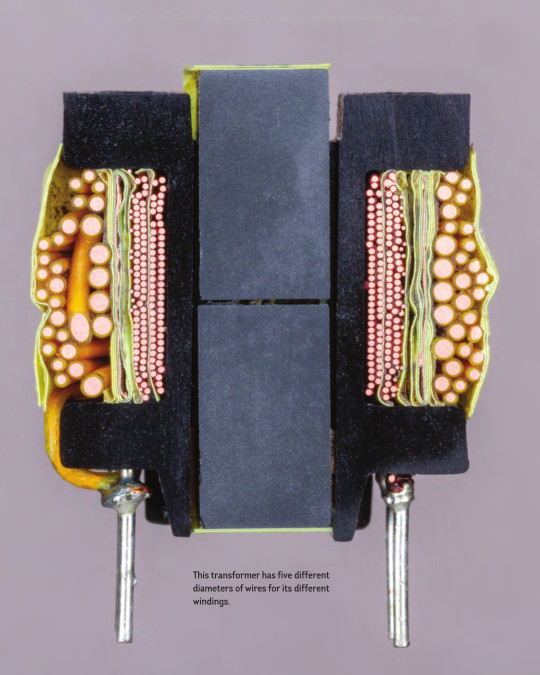
Truly, quantity has a quality all its own. Miniaturize these assemblies and produce them at unimaginable scale and the simple, legible components turn into mystical black boxes that only the most dedicated study can reveal. Like every magician's trick, the unfathomable effect is built up through the precise repetition of something very simple.

A prolonged study of Open Circuits reveals something important about the hacker aesthetic, a collection of graphic design, fashion and industrial design conventions that begins with this realization: that the crisp lines of digital logic can be decomposed into blobby, probabilistic lumps of metal, plastic, and even wax.
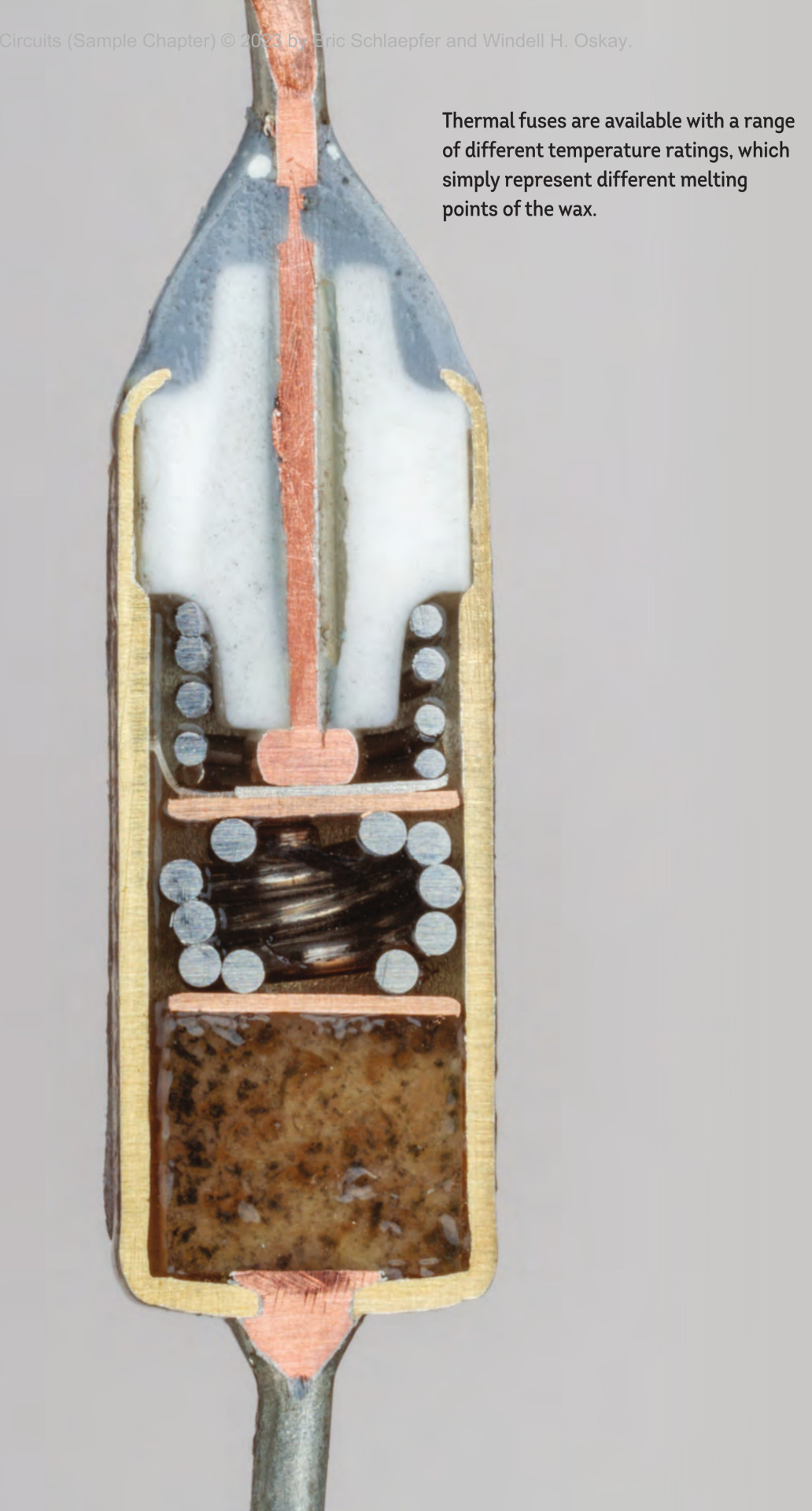
It reminds me of George Dyson's brilliant memoir/history of computing, Turing's Cathedral, where he describes how he and the other children of the scientists building the first digital computers at the Princeton Institute spent their summers in the basement, hand-winding cores for the early colossi their parents were building on the floors above them:
https://memex.craphound.com/2012/03/12/george-dysons-history-of-the-computer-turings-cathedral/
You can see my hacker aesthetic photos in my Defcon 31 photo set:
https://www.flickr.com/search/?sort=date-taken-desc&safe_search=1&tags=defcon31&user_id=37996580417%40N01&view_all=1
In this video, Eric Schlaepfer illustrates the painstaking work that went into decomposing these tiny, precise components into their messy, analog subcomponents. It's pure hacker aesthetic, and it's mesmerizing:
https://www.youtube.com/watch?v=byKyJ0b04Lo
But Open Circuits isn't just an aesthetic journey, it's a technical one. After all, Oskay is co-founder of Evil Mad Scientist Labs, one of the defining places where hardware hackers gather to tear down, pick apart, mod, improve and destroy electronics. The accompanying text is a masterclass in the simple machines that combine together to make complex assemblies:
https://www.evilmadscientist.com/
Defcon is a reminder that the world only seems hermetically sealed and legible to authorized parties with clearance to crack open the box. From shopping cart wheels to thermal fuses, that illegibility is only a few millimeters thick. Sand away the glossy outer layer and you will find yourself in a weird land of wax-blobs, rough approximations, expedient choices and endless opportunities for delight and terror, mischief and care.

Back my anti-enshittification Kickstarter here!

If you'd like an essay-formatted version of this post to read or share, here's a link to it on pluralistic.net, my surveillance-free, ad-free, tracker-free blog:
https://pluralistic.net/2023/08/14/hidden-worlds/#making-the-invisible-visible-and-beautiful
#pluralistic#books#reviews#evil mad scientist laboratories#no starch press#Windell Oskay#Eric Schlaepfer#electronics#hacker aesthetic#makers#diy#secret knowledge#gift guide#photography
96 notes
·
View notes
Photo
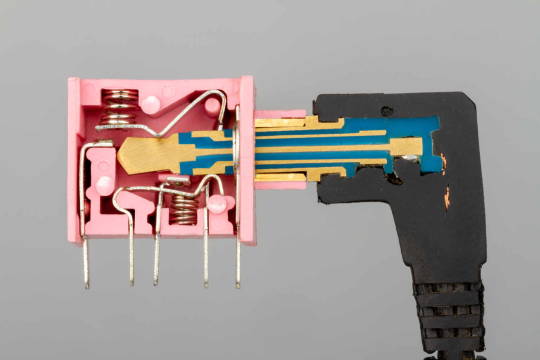
‘Open Circuits’ Slices Everyday Electronics to Reveal Their Surprisingly Stunning Insides Whether the invisible circuitry that powers our phones or the bundled cables that transport sound and data, it’s easy to appreciate common technologies for their functional purposes and simplification of daily life. A recently released book from No Starch Press, though, treasures these components for the artistry of their engineering and highlights the intricacy and elegance inherent within each design. Open Circuits: The Inner Beauty of Electronic Components features photographs of 130 technologies cross-cut or altered to reveal their otherwise hidden elements. More Do stories and artists like this matter to you? Become a Colossal Member today and support independent arts publishing for as little as $5 per month. The article ‘Open Circuits’ Slices Everyday Electronics to Reveal Their Surprisingly Stunning Insides appeared first on Colossal. https://www.thisiscolossal.com/2023/02/open-circuits-book/
0 notes
Text

A series of components that were featured in Windell Oskay and Eric Schlaepfer's book, Open Circuits. I highly recommend checking out that book.
575 notes
·
View notes
Note
hey!!!!!!! could i have a book recommendation thing for a miu iruma with books about math and engineering?
The Joy of X by Steven Strogatz
This is one book that I actually own, and I very much enjoy and recommend it. It explains very basic mathematical concepts to very complex ones in a very interesting and engaging way.
Open Circuits: The Inner Beauty of Electronic Components by Windell Oskay, Eric Schlaepfer
I haven't read this one yet, but the preview makes it look interesting. Here's the synopsis from B&N:
"Open Circuits is a photographic exploration of the beautiful design inside everyday electronics. Its stunning cross-section photography unlocks a hidden world full of elegance, subtle complexity, and wonder."
The Design Of Everyday Things by Don Norman
From Amazon:
"The Design of Everyday Things is a powerful primer on how -- and why -- some products satisfy customers while others only frustrate them."
The reviews are pretty nice, too!
0 notes
Text
2023年10月20日に発売予定の翻訳書
10月20日(金)には27冊の翻訳書が発売予定です。 クリスマ��を見すえた児童書が多数出ます。 そのほか、ロックバンドのピンク・フロイドで初期にリーダーだったシド・バレットの詩集、米FRBの元議長ベン・バーナンキの著書なども気になります。
ザ・リトル・ブラック・ブック・オブ・フライフィッシング

カーク・ディーター/著 クリス・ハント/著 阪東幸成/翻訳
ふらい人書房
デジタルヒストリーを実践する

ジョナサン・ブレイニー/著 ジェーン・ウィンターズ/著 サラ・ミリガン/著 マーティ・スティア/著 ほか
文学通信
マレー進攻航空作戦 1941-1942

マーク・E・スティル/著 橋田和浩/監訳
芙蓉書房出版
文学的絶対

フィリップ・ラクー=ラバルト/著 ジャン=リュック・ナンシー/著 柿並良佑/訳 大久保歩/訳 ほか
法政大学出版局
フェアリーテイル・オラクル
ルーシー・キャベンディッシュ/著 ジャスミン・ベケット-グリフィス/イラスト 福山良広/翻訳
ガイアブックス

シド・バレット全詩集

シド・バレット/著 ロブ・チャップマン/解説 ピーター・ジェンナー/著 茂木信介/翻訳
DU BOOKS
クレモナのリウトプランド『報復の書』/ヴァイセンブルクのアーダルベルト『レーギノ年代記続編』
三佐川亮宏/翻訳
知泉書館
簡体字版『歎異抄ってなんだろう』
高森顕徹/著 高森光晴/著 大見滋紀/著 『歎異抄ってなんだろう』翻訳チーム/翻訳
1万年堂出版
オープンサーキット 美しい電子部品の世界
Eric Schlaepfer/著 Windell H. Oskay/著 秋田純一/翻訳
オーム社
チビにいちゃんと馬のロッタ
エディス=ウンネルスタッド/著 小宮由/翻訳 さこももみ/イラスト
瑞雲舎
ゆきうさぎの クリスマスげきじょう : クリスマスのちいさなおはなし
レベッカ・ハリー/著 木原悦子/翻訳
株式会社 世界文化社
新装版 ゆきうさぎの ねがいごと : クリスマスの ちいさな おはなし
レベッカ・ハリー/著 木原悦子/翻訳
株式会社 世界文化社
新装版 ねずみくんの クリスマスの おうちさがし : クリスマスの ちいさな おはなし
レベッカ・ハリー/著 木原悦子/翻訳
株式会社 世界文化社
新装版 ゆきうさぎの おくりもの : クリスマスの ちいさな おはなし
レベッカ・ハリー/著 木原悦子/翻訳
株式会社 世界文化社
AIファースト・カンパニー : アルゴリズムとネットワークが経済を支配する新時代の経営戦略
マルコ・イアンシティ/著 カリム・R・ラカーニ/著 吉田素文/監修 渡部典子/翻訳
英治出版
まほうのよるに : はじめてサンタのそりをひいたトナカイのおはなし
マット・タバレス/著 前沢明枝/翻訳
株式会社 世界文化社
インド占星術大全
M・S・メータ/著 清水俊介/翻訳
太玄社
メルキゼデクの教え
ダニエル・ミテル/著 五十嵐多香子/翻訳
ナチュラルスピリット
ジジェク
クリストファー・クル=ワント/著 ピエロ/イラスト 望月由紀/翻訳
現代書館
外交史入門
ジョセフ・M・シラキューサ/著 一政祐行/翻訳
創元社
子どもとの関係が変わる自分の親に読んでほしかった本
フィリッパ・ペリー/著 高山真由美/翻訳
日経BP 日本経済新聞出版
関係の世界へ : 危機に瀕する私たちが生きのびる方法
ケネス・J・ガーゲン/著 東村知子/翻訳 鮫島輝美/翻訳 久保田賢一/翻訳
ナカニシヤ出版
鳥になって感じてみよう
ティム・バークヘッド/著 キャサリン・レイナー/イラスト 水野裕紀子/翻訳 樋口広芳/著
化学同人
ひこうじょうのはたらくくるまたち
シェリー・ダスキー・リンカー/著 AG・フォード/イラスト 福本友美子/翻訳
ひさかたチャイルド
サンタさんのジングルベル
エリー・パターソン/著 ダン・テイラー/イラスト ゆりよう子/翻訳
ひさかたチャイルド
21世紀の金融政策 : 大インフレからコロナ危機までの教訓
ベン・S・バーナンキ/著 高遠裕子/翻訳
日経BP 日本経済新聞出版
国際関係論
クリスチャン・ルース=スミット/著 山��文史/翻訳
創元社
0 notes
Text
Open Circuits made me fall in love with electronics again – TechCrunch
Open Circuits made me fall in love with electronics again – TechCrunch
It’s no secret that I’m a sucker for photography — I’ve been known to take a photo or two in my time — and I have a hell of a weak spot for electronics, to boot. In the upcoming Open Circuits from No Starch Press, authors Windell Oskay, co-founder of Evil Mad Scientist Laboratories, and Eric Schlaepfer, creator of the popular collection of vintage competing Twitter account Tube Time, talk about…

View On WordPress
0 notes
Text
This book made me fall in love with electronics all over again
This book made me fall in love with electronics all over again
It’s no secret that I’m a sucker for photography — I’ve been known to take a photo or two in my time — and I have a hell of a weak spot for electronics, to boot. In the upcoming Open Circuits from No Starch Press, authors Windell Oskay, co-founder of Evil Mad Scientist Laboratories, and Eric Schlaepfer, creator of the popular collection of vintage competing Twitter account Tube Time, talk about…

View On WordPress
0 notes
Photo

Revealing the Hidden Beauty of Common Components via IEEE Spectrum: Technology, Engineering, and Science News
As we’ve remarked in these pages before, oftentimes some of the best engineering around is invisible, hidden inside black boxes of one sort or the other. If the black box is sufficiently important in some way, professional forensic and reverse engineers can be employed to crack it open and reveal its secrets. But what about more humble items, such as the apparently unremarkable components that make up everyday electronics? Who cares enough to take the trouble to look inside them?Eric Schlaepfer does. To the delight of a growing following, in March of this year, Schlaepfer started posting to his @TubeTimeUS twitter account magnified cross-sections of capacitors, cables, LEDs, transistors, and more, usually with accompanying annotations.
0 notes
Note
The problem with beekeeping is that honeybees are an invasive species in north america and therefore significantly damage the ecosystem
There are seven native bee species that are endangered and they are the actual pollinators in north america, keeping honeybees actually hurts them please read up on this before spreading misinformation
….what sources are you getting this from???? what does “actual pollinators” even mean????
It’s true that honey bees aren’t native to North America, and it’s true that native bees are in trouble, but other than that….no. I can’t find any sources that say honey bees do “significant damage to the ecosystem.” Nor can I find any source that says beekeeping (honey bees) harms native bees. In fact, many folks say that while native bees are overlooked too much when we talk about bee conservation, the conservation efforts to help honey bees also help native bees.
I took to google to see if I could find any studies reporting that honey bees harm native bees. I couldn’t find any search results (and I did try several search phrases) that say anything about honey bees as a problem (aside from africanized honey bees). But I did find these two articles.
One:
We’re often asked: “Do honey bees, being an invasive species, impact the native bees?”
We put that question to Extension apiculturist Eric Mussen of the UC Davis Department of Entomology and Nematology. He’s served as California’s Extension apiculturist since 1976, almost 40 years.
His answer: “We do not have a definitive answer to that question. But, since honey bees have been living in what is now the U.S. for just short of 400 years, it is likely that honey bees and native bees determined, long ago, how to partition resources at any particular location so that both species survived. It is true that only honey bees can be moved into and out of a specific location overnight, and that might put a stress on local populations of native bees, but I never have heard of honey bees eliminating native bees from any particular spot.” [x]
(Bolding is my own). And two:
Much of modern conservation management is organized around keeping alien species out and killing off the ones that made it in. And yet there are no loud voices calling for the alien honeybees to be wiped out in the New World. “It’s almost like everyone politely ignores that they’re not native,” says Dov Sax, a conservation biologist at Brown University. Sax and some of his fellow biologists think that it’s time to give some serious consideration to this paradox. In a paper published in Conservation Biology, Sax and two colleagues argue for recognizing the ecological value of some introduced species. “We predict the proportion of non-native species that are viewed as benign or even desirable will slowly increase over time,” they write.The fact that a journal like Conservation Biology would publish such a statement is a testament to how seriously some researchers are taking the idea. “It’s considered edgy, but it’s not considered nuts,” says Sax. Not nuts, perhaps — but certainly not innocuous. The new paper is eliciting strong responses from other conservation biologists — ranging from hearty endorsements to fierce protests.Sax and his co-authors — Julian Olden of the University of Washington and Martin Schlaepfer of State University of New York in Syracuse and INRA in Rennes, France — point to a number of studies that have documented the benefits of introduced species. Some non-native species provide habitat and food for native animals and plants, for example. [x]
The article goes on to talk about examples of that^. The second article and (as far as I can tell from the abstract) the paper aren’t really about bees, they just reference them as an example. Neither article nor paper approaches invasive species as a simple, solely good or bad/black and white issue. It’s complicated and scientists are only just beginning to understand invasive species and how all that works. But I digress.
The only thing I could find to support your claim is a clearly biased webpage with vegetarian/vegan + animal rights leanings (note the difference between animal rights and animal welfare). This webpage gives no author name, date, or any other information that makes it a verifiable, cite-able source. The page does have a bibliography, however the sources are very old and aren’t (as far as I can see- I can’t access them) relevant to the author’s specific “honey bees harm/take away from native bees” claims.
Anyway, while native bees are certainly in trouble, honey bees (as far as I can tell from what I’ve read) are hardly the problem.
And while honey bees may (idk for sure) be the only ones used in commercial pollination, there is a growing number of independent/local beekeepers who work with native bees. In fact, I follow one here on tumblr.
Please educate yourself and read up on this before spreading misinformation.
3 notes
·
View notes
Text

My 11th PCB design just got sent off to the fab the other day. Designing PCBs is surprisingly fun when you get into the rhythm of it, and I blame Eric Schlaepfer for this.
You know, the guy who made the MOnSter 6502? The co-author of Open Circuits? It's his fault for helping me develop that skillset, and I've told him as much, both in person, and at VCF West.
112 notes
·
View notes
Text


Open Circuits by Eric Schlaepfer & Windell H. Oskay
188 notes
·
View notes
Photo






I had the honor of connecting the Cactus to the MOnSter 6502 at VCF West XIII.
For those of you unfamiliar, the MOnSter 6502 is functional transistor-scale MOS 6502 replica. It uses 3218 transistors and 1019 resistors, plus quite a few LEDs to produce an amazing lightshow the likes of which the world has never seen before. You can observe the inner machinations of the microprocessor at work and really get a sense of what’s going on at the die level. The MOnSter had only been run with designs specifically tailored to it’s unique limitation: speed. It can only run at a maximum of 60KHz, with 50KHz being the more ideal clock rate to my understanding. This means that many 6502 computers simply can’t use the MOnSter due to dependencies on higher frequencies.
Eric Schlaepfer and I discussed the prospect of combining our projects in a brief abomination of science in the weeks leading up to VCF West. I set to work building a board that would work specifically with the NMOS parts, adding in additional buffers to account for the lack of a Bus Enable pin. I wasn’t sure if it would work -- I tend to miss something in my designs.
We had our first integration attempt on Saturday, using my dedicated NMOS CPU board for the Cactus. There was bus contention on the R/W line causing issues, so we had to abort and I had to think of a way to solve the issue with my minimal kit of parts.
The next day, Eric supplied me with a breadboard, some jumper wires, and a few parts (namely tri-state buffers) from which I could cobble together a fix for the R/W line bus contention. A test run with an original Commodore NMOS 6502 at 50KHz proved that I had fixed the problem, so we hooked in the MOnSter and turned on the power. Success! We got a BASIC prompt!
The Cactus is the first third-party computer to use the MOnSter successfully, and the third machine overall to run with it. BASIC ran really slowly, but it was fun to watch how much processing occurs each time the enter key is pressed when entering text. Blinkenlights of this scale have probably not been seen in computing since an IBM System/360 Model 91 was in service last.
Thank you Eric for working with me to create the quick fix that made this Frankensteinian abomination possible. And a thank you to Lenore and Windell of Evil Mad Scientist Laboratories @evilmadlinks for putting up with my goofiness. This was a fun experiment that I consider the highlight of VCF West for me.
#cactus#monster 6502#vcf west xiii#commodorez goes to vcfwxiii#vcfwxiii#vcf west#mos 6502#evil mad scientist laboratories#computer history museum#6502 homebrew
76 notes
·
View notes
Video
youtube
I exhibited the Cactus at VCF West on August 4th & 5th in Mountain View California, at the Computer History Museum. A few weeks prior to the show, I discovered that the MOnSter 6502 would be in attendance, along with the good folks at Evil Mad Scientist Laboratories. I reached out to its creator, Eric Schlaepfer, and asked if he would be willing to combine our two machines in an experiment. He was interested, letting me know that as long as I adhered to the NMOS specification and clocked down to 50KHz, the two should be able to work together. Normally, the Cactus relies on the 65C02's Bus Enable pin to halt the CPU and allow the front panel logic to take over to provide the user with direct memory access. I built a new processor card with additional buffers to account for the lack of such a pin on the NMOS variant, and tested it with an original Commodore 6502 from 1983. Once at VCF West, our first attempt on Saturday pointed out that I had neglected to buffer the Read/Write line, resulting in bus contention. On Sunday, Eric brought me a breadboard, some additional jumper wires, and a few tristate buffers from his stockpile. After splicing an additional 74LS245 into the NMOS card, and testing with an NMOS 6502, we decided to try again. Lo and behold, the Cactus and the MOnSter 6502 successfully booted into BASIC, and ran at 50KHz for about half an hour, creating a spectacular fusion of blinkenlights. That makes the Cactus the third machine to use the MOnSter 6502, and the first one that wasn't made by Eric. Needless to say, this was the highlight of my weekend.
#cactus#MOnSter 6502#MOS 6502#VCF West XIII#vcfwxiii#commodorez goes to vcfwxiii#vintage computer festival west xiii#6502#6502 homebrew
63 notes
·
View notes
Text
VCF West XIII Closing Thoughts
This weekend was pure awesome. Today in particular.
I met Jeri Ellsworth for the first time since I was 16. She's an absolute wizard.
I played Space War on a PDP-1 computer.
I took a picture with Jason Scott and the Cactus. That guy is a legend, and the fact that he knows about me and my work is oh so nice to know.
I ran into Brian Benchoff of Hackaday, and finally got to show him my computer. He digs it. Even made a SECOND Hackaday post on it. Nice.
I got to meet Marc of Curious Marc on youtube, and thank him for his efforts to share history.
I watched an IBM 1401 computer from 1959 run a program, where it took my name on a punch card and printed out a giant page with it on an IBM 1403 Line Printer.
I saw a real OSI-300 again, and was given massive diagrams & schematics by the guy who brought it to the show (who found it in his garage just to show me). That was really nice of him.
I saw a real Data General Nova on display. This is the machine that showed Woz that you could creatively cut down on hardware and achieve the same results. This concept was taken to heart with the Cactus. I kinda want one more than I did before.
I won second place for Best Demonstration.
Met alot of really nice people from parts of the community I had never interacted with before.
I talked kit building with Oscar Vermeullen, the guy responsible for the PiDP-8 and 11. He gave me good advice.
I met another former Commodore employee.
I managed to fix damage the Cactus incurred during transit using minimal parts and tools.
I scored the entire year of Byte magazine issues from 1977.
Erik Klein of the Vintage Computer Forums (among other things) was kind enough to lend me a Televideo 910 terminal to use while I was at the show. It worked great!
A robot is delivered me oreos in my hotel room.
But the best thing of all? Eric Schlaepfer and I combined the MOnSter 6502 and the Cactus.
That's right. It's now the third machine to interface with the MOnSter, and the only computer not made by Eric himself to run his processor. I was honored to have the experience. The Cactus had a special NMOS board constructed just for this situation, which required minimal tweaking to get it to work right. We ran it at 50KHz for about 20 minutes - pictures are coming.
#cactus#MOnSter 6502#commodorez goes to vcfwxiii#vcfwxiii#vcf west xiii#vintage computer festival west xiii#vcf west#Jason Scott#jeri ellsworth#PDP-1#ibm 1401#data general nova#byte magazine#6502 homebrew
12 notes
·
View notes